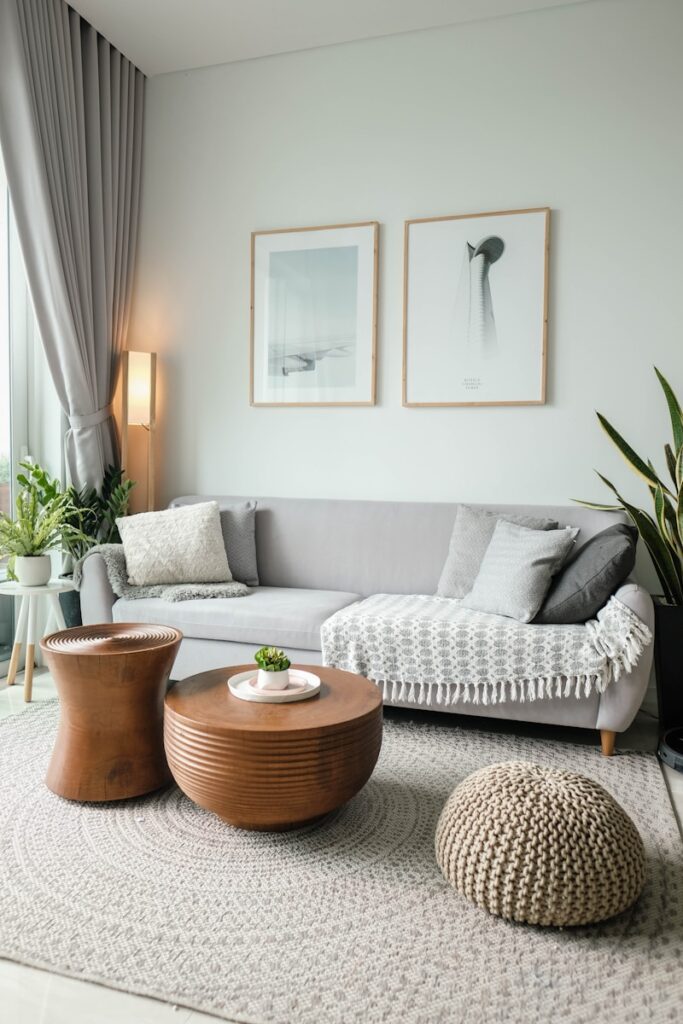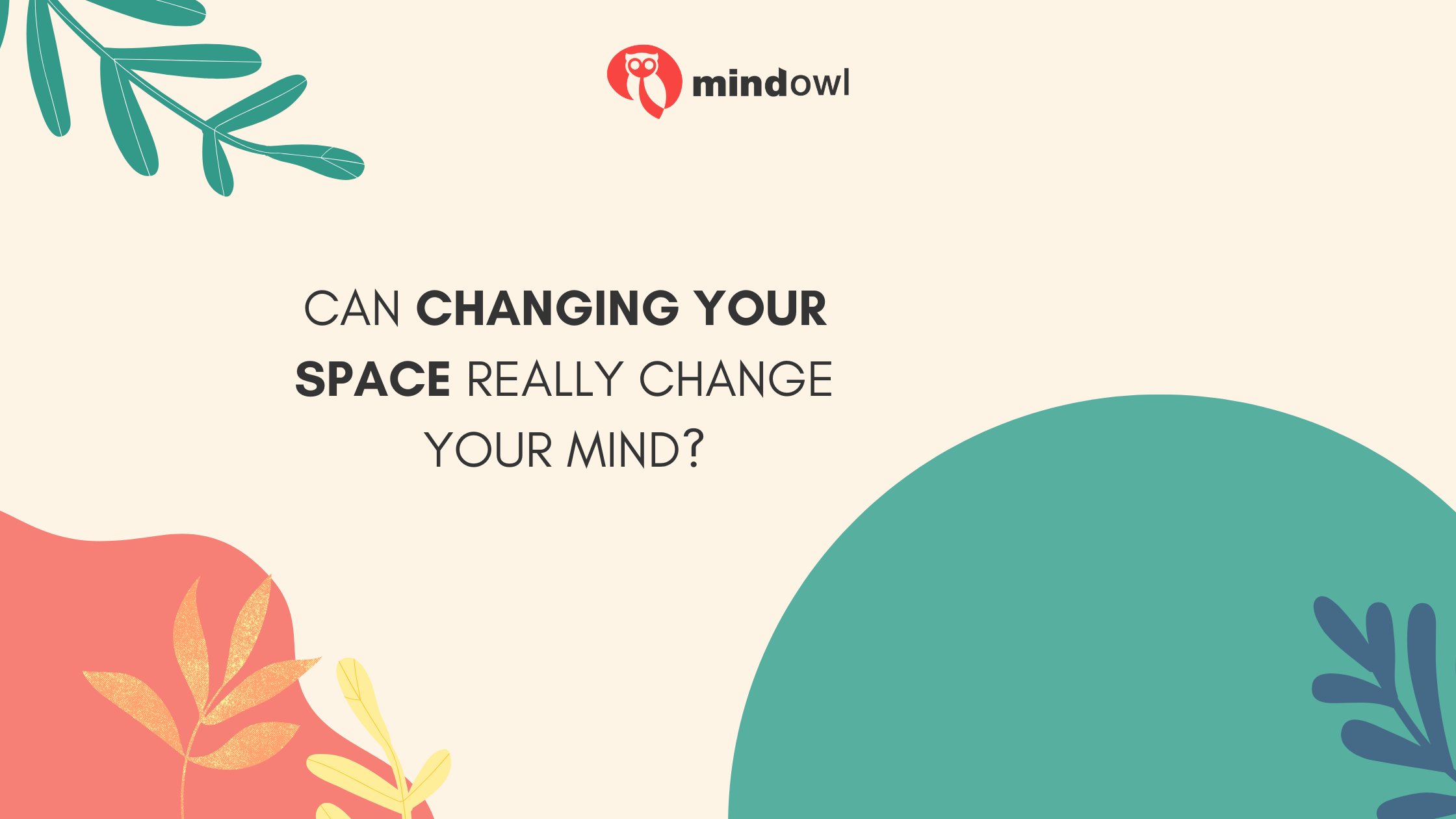We talk a lot about how to make a space look beautiful. The right throw pillows. A bold wall color. The perfect curved-back chair that whispers quiet luxury. But we don’t talk enough about how those choices actually make us feel. Not in the performative, Pinterest-perfect sense, but deep down, on the kind of level that affects your mood when you walk in the door at the end of the day. That’s the part of design that most people overlook—and it’s quietly messing with our mental health.
Design and mental well-being are more connected than people realize. And as more of us try to work, relax, parent, and recover in the same rooms, those small design decisions suddenly start to matter a lot more than we ever thought they would.
When Your Space Feels Like Chaos, So Do You
Your brain doesn’t just react to what you see. It absorbs it, catalogues it, turns it into emotional signals, and then shoots that data through your nervous system like a headline you didn’t ask for. That pile of unfolded laundry in the corner? Your brain might treat that like a threat. The desk cluttered with papers, chargers, and a half-eaten protein bar? It reads as “unfinished business.” Which is just another way of saying: stress.
We’re not talking about becoming minimalist monks who only live with three objects and a succulent. But if your environment feels overwhelming or messy—or even just overly trendy in a way that doesn’t feel like you—it can leave you mentally scattered and emotionally drained. Certain spaces can make it hard to concentrate, others can trigger anxiety, and some just make you feel like you’re stuck in someone else’s idea of “peaceful.”
If your physical space is working against you, no amount of meditation or supplements will bring you peace. You’re trying to find calm in a room that’s actively shouting over your nervous system. And you won’t win.

Your Nervous System Can Feel the Vibe, Even If You Can’t Explain It
There’s this thing that happens when you walk into a space and immediately feel better. You don’t always know why—it might be the light, or the temperature, or the way the furniture is arranged—but your body just breathes easier. That’s your nervous system recognizing safety. It’s your subconscious saying, “I can rest here.”
That’s the thing people miss when they only chase aesthetic trends. You can have the trendiest room on the block and still feel tense in it. Why? Because it’s not designed to support you. It’s designed to impress someone else. Or worse, to impress an algorithm.
True comfort starts with how you feel, not how a space looks in a photo. A dim room with heavy curtains and deep colors might feel comforting to one person and claustrophobic to another. It’s about knowing what actually soothes your senses—and being honest about it. Maybe natural wood makes you feel grounded. Maybe cool-toned neutrals make your brain go numb. Maybe your home office makes your shoulders tense because the chair was never meant to support a real person’s spine.
So we’re starting here: not with design tips, but with awareness. When your body flinches in your own home, that’s data. That’s a message. That’s where wellness at home actually begins.
The Space Between Crisis and Comfort Has a Door
There’s a point where burnout turns into breakdown, and sometimes, rearranging your living room just isn’t enough. That’s when design meets something deeper—something clinical, something structured. And it’s time we start talking about what that step really looks like, without shame.
Some people picture a sterile, cold place when they think about mental health treatment. They imagine locked doors, harsh lighting, and generic hospital beds. But there’s a new wave of support spaces that are completely different. Picture soft lighting, cozy shared spaces, natural textures, personalized touches, and design that’s not just functional but actually restorative.
That’s what a modern inpatient mental health facility can be. A place that isn’t about confinement, but containment. A soft container that helps your brain settle down and recalibrate. It’s a reset button in physical form. These are spaces built for safety and comfort, where mental health care blends into the architecture instead of clashing with it.
People who’ve been through it don’t talk about feeling trapped. They talk about feeling held. And while not everyone will need that level of care, just knowing that kind of design-forward, dignity-centered treatment exists is huge. It gives the whole conversation about mental wellness a physical shape—and it’s nothing like what you’ve been taught to fear.
Design Can’t Heal You, But It Can Stop Hurting You
Let’s be clear: changing your throw pillows is not therapy. Hanging a better light fixture is not trauma work. But your space can absolutely support the work you’re already doing. Or it can sabotage it.
People spend so much time looking for a cure that they forget about maintenance. And mental health—like skin health, like gut health, like literally any kind of health—needs maintenance. That means small choices, made often. It means asking yourself how you feel before you decide to redo your bedroom in burnt orange. It means noticing whether your office chair makes your jaw clench. It means lighting a candle not for the vibe, but because scent calms your panic.
Sometimes you can’t afford to knock down walls or buy new furniture. But you can rearrange a few things to make space for your actual needs. You can stop apologizing for needing softness or quiet or more light. You can stop pretending your brain isn’t reacting to that awful piece of abstract art someone gave you five years ago. Design should feel like a hug, not a performance. And yes, it’s okay to want your environment to be a safe place for your mind, not just your body.
Your Home Is Talking to Your Brain—Are You Listening?
Mental health isn’t a finish line. It’s a daily relationship. And design isn’t just a paint color. It’s part of that relationship. The good news? You don’t have to throw everything out or start over. You just have to tune in.
When your space supports you, the healing doesn’t feel so hard. When it doesn’t, even the best coping tools can start to feel like noise. So if your nervous system has been whispering something’s off, believe it. You don’t need another throw blanket. You need to start listening.
MindOwl Founder – My own struggles in life have led me to this path of understanding the human condition. I graduated with a bachelor’s degree in philosophy before completing a master’s degree in psychology at Regent’s University London. I then completed a postgraduate diploma in philosophical counselling before being trained in ACT (Acceptance and commitment therapy).
I’ve spent the last eight years studying the encounter of meditative practices with modern psychology.

